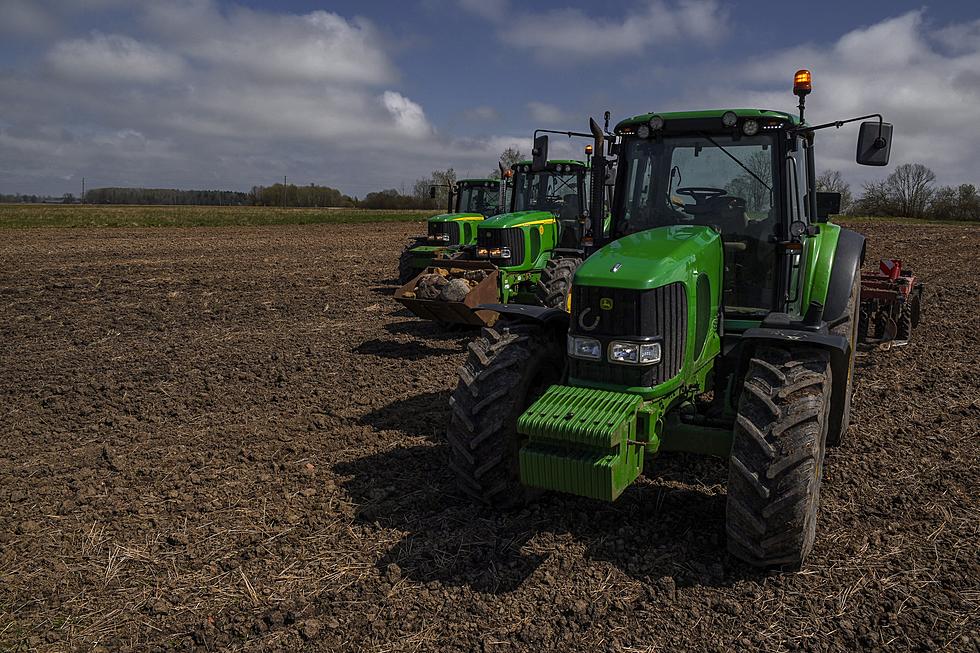
Iowa State Economist Shares Insights on Equipment Supply Chain
It’s no secret that the COVID-19 pandemic brought to light problems in the supply chain that have been boiling up for years. Iowa State University’s Bobby Martins a professor of Economics works with cooperatives and their supply chains. When it comes to many supply chain issues we have been seeing, Martins says COVID was a factor that
Probably something that pushed us over the edge and those red flags become ginormous pillars of disruption that is going on.
And having disruption on a global scale can have rippling effects.
Whenever you have global supply chains that are disrupted in the magnitude in the length of time that they have been products, goods don't flow like we would intend them to. We simply whether we are on the farm or whether we're in the city, don't operate in an in and disconnected world. We are very connected in everything that we're doing.
So, What Were the Red Flags?
One thing that plays into this, Martin says, is we have come through a long stretch of time since the end of the Cold War when we had a relatively stable global trading environment.
The supply chains that we have, in general, right now globally, are designed to be efficient, to be able to really make use of those international relationships is very efficient in what they do. And that's what the consumers look for a long time.
Very efficient supply chains did not necessarily mean that they are resilient or able to bounce back when a disruption happens quickly, right. They also do not have a lot of excess capacity to be able to absorb disruptions whether it is fundamental shifts in demand- like we have experienced from consumers shifting spending from the service sector to durable goods spending here in the US; or whether it’s shifting on the supply side, where you truly see certain suppliers actually shutting down.
Looking at Equipment
These supply chain gaps are seen in the equipment market as well.
The equipment market is one that is very interesting to sit back and ponder and think about a little bit. There are a few things going on there. Very similar to what we've seen with vehicles; equipment manufacturers had challenges procuring components and inputs from their suppliers.
So let's say a typical equipment manufacturer has over 5000 suppliers, each one of those suppliers has a minimum of 10 suppliers right so now we're 50,000 suppliers, just two tiers of the supply chain. If you've got three tiers up the supply chain, you assume another very small number that each of the second-tier suppliers has 10 suppliers. You're at 500,000 suppliers going into an equipment manufacturer, just three tiers up the supply chain.
Without large inventory buffers in between each one of these suppliers. We would expect someplace along the line someone's going to have problems given the length and the duration and magnitude of the disruptions that we've been through these last couple of years.
And when it comes to demand for that equipment, Martins says we are not necessarily breaking down more or needing more parts.
But because our supply chains are so full, they're overwhelmed or hindered, built to be efficient, but they're overwhelmed. One of the things that we are likely to see at some level, right again, this is not a panic button won't but at some level, to be able to think that we would expect to see some parts shortages due to these overwhelmed and very full supply chains.
But even with the disruptions, it is still a good time to take that opportunity to create more resilient supply chains.
I don't like to hear people say that this time to pull out the six-row planter from the tree rose thing go back to doing something about the technology that exists. I think this is a great opportunity for agriculture to continue to adopt technology, innovative, right and we can innovate able to use less crop protection because of the innovations and the technology that is available.
Here is All The House You Get for $1 Million Dollar in Cedar Falls vs. Los Angeles
Companies Based in Iowa
More From AM 950 KOEL









